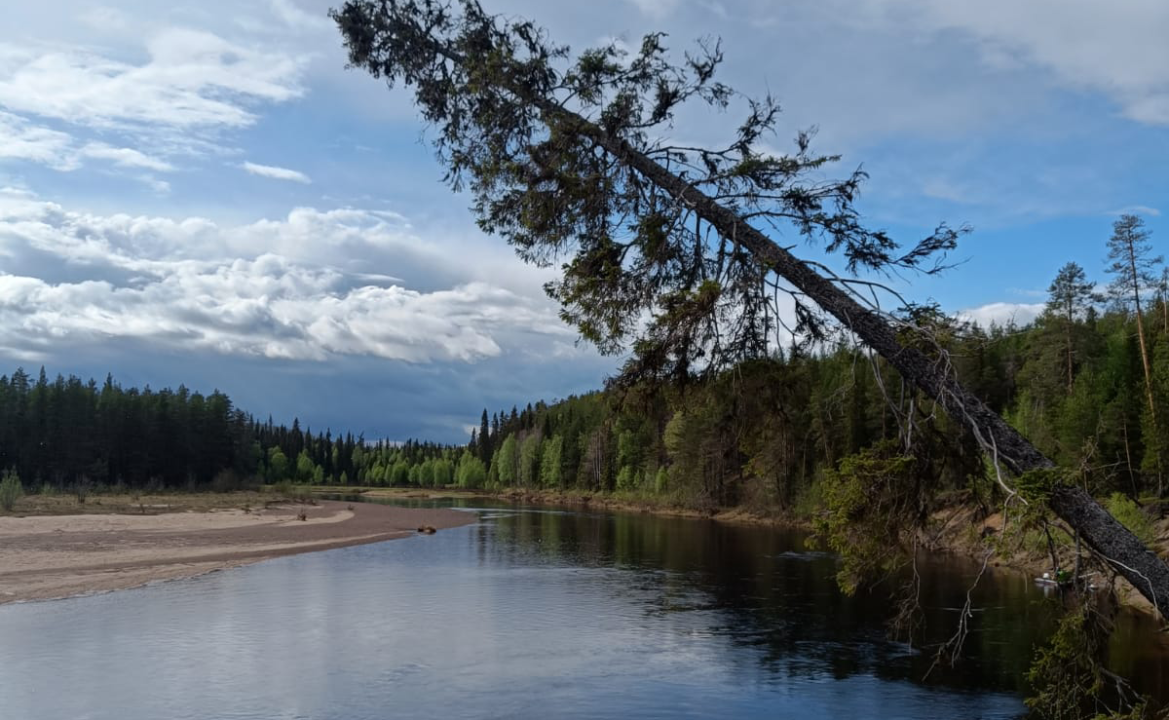
How are the snake-shaped meandering rivers changing? Academy Fellow Elina Kasvi will study the winding rivers of the world for the next four years.
What are meandering rivers, where are they found and how do they form? Most of us recognize the winding, slowly flowing river type, but why do some rivers meander instead of flowing straight towards the ocean? And why are they not so common in Finland? Elina Kasvi from University of Turku started her Finnish Academy fellowship in may 2023, to study the winding rivers.
“Well, firstly, meandering rivers require a specific, thick and fine-grained soil to form on. The landscape must also be quite flat and the flow slow – fast-flowing rivers with greater erosion forces do not form meanders. Finland is largely covered by superficial granite and moraine beds that prevent the forming of meanders. We do see some meanders in the southern clay fields, but the more impressive meanders can be found in the North, at Oulanka, Ivalo and Pulmanki rivers. For example, Pulmanki is an old fjord that got filled with sandy sediments during the Holocene ice retreat.”

Even though we don’t have many large meandering rivers in Finland, they can be found globally in variable geographic locations and climatic regions. And yet their formation is following the same pattern everywhere – this formation has been of great interest of scientists for a long time. It is still not fully understood, there are some unanswered questions on what the factors are, controlling the evolution of the meanders, Kasvi explains. The water level and flow are definitely driving factors but what causes the river all of a sudden to flow through and cut off the meander? In some studies, the cutoffs have been perceived to occur in series of many incidents within a relatively short time frame and then the river stabilizes again – but what sets off this process and can human or climate forcing disturb the process? The main idea of her research is to study how the changing climatic and environmental conditions may change the evolution of the meanders. This is a question that is of great interest to the populations living along the famous and tightly inhabited meandering rivers, like the Amazon, Mississippi River or one of the study sites, the Yellow river.
The four-year academy fellow project will study meandering rivers globally
The sites range from Tanzania to France, Poland and China. In Finland, at least Pulmanki and Oulanka rivers will be studied together with the Fresh Water Competence Centre. Rivers with different types of environmental and anthropogenic pressures were chosen in order to find some answers to the remaining questions on the meandering process, how for example land use change or deforestation may affect the meanders. It is not an easy task to see the effects, as the processes are in essence very slow.

One interesting Finnish example site in Elina Kasvi’s opinion is Kuusinki river, which is branch of Oulanka river. A dam removal will be completed soon at Kuusinki river, so it offers a great nearby site to study the impact of dam removal on the meanders. The Global coverage and long-time series of satellite imaginary allow now for detecting the migration for decades back. The Finnish long time series of hydrological measurements, the new types of data acquired with modern technology, as well as the digital twins that the Freshwater Competence Centre is currently building, will benefit this research by providing detailed understanding of the short-term processes. The digital twins of the Finnish meandering rivers are being built by The Green-Digi-Basin project and the Hydro RI Platform infrastructure is compiling the latest sensors and equipment to do collect accurate data on rivers, including the meander evolution.
Elina Kasvi wishes that after her four-year research, she has been able to find some links and increase the understanding on the evolution of the meanders and particularly increase the research and understanding on how river management and human activities drive the river change. Trying to understand the rivers is important – so many people and livelihoods rely on the rivers, their biodiversity and the waterways they provide.

Global Business Process Manager, Supply Chain
6moSuperb Elina 💎
Development manager
11moCongratulations Elina for your fellowship! It is really great effort for artic rivers.